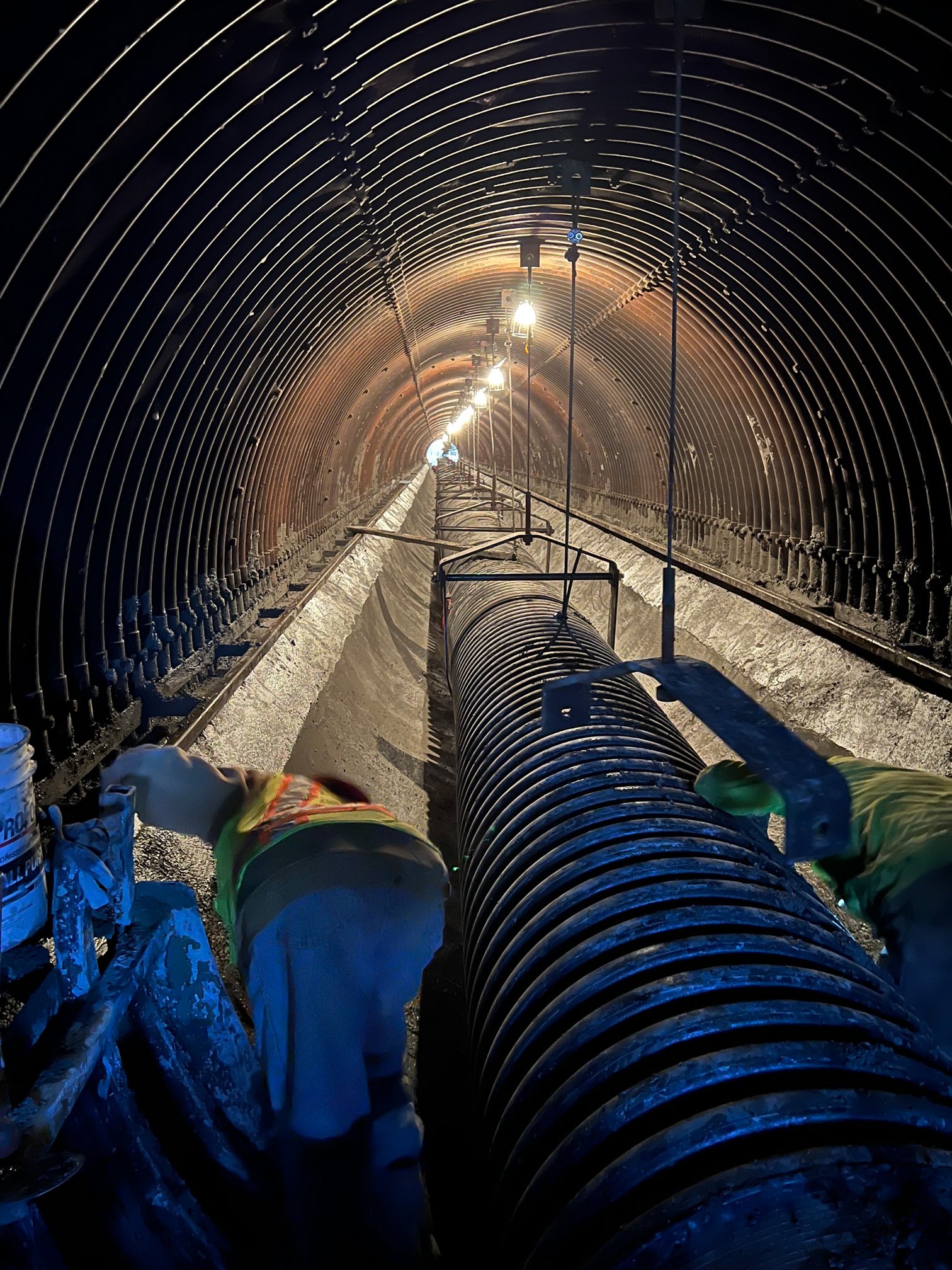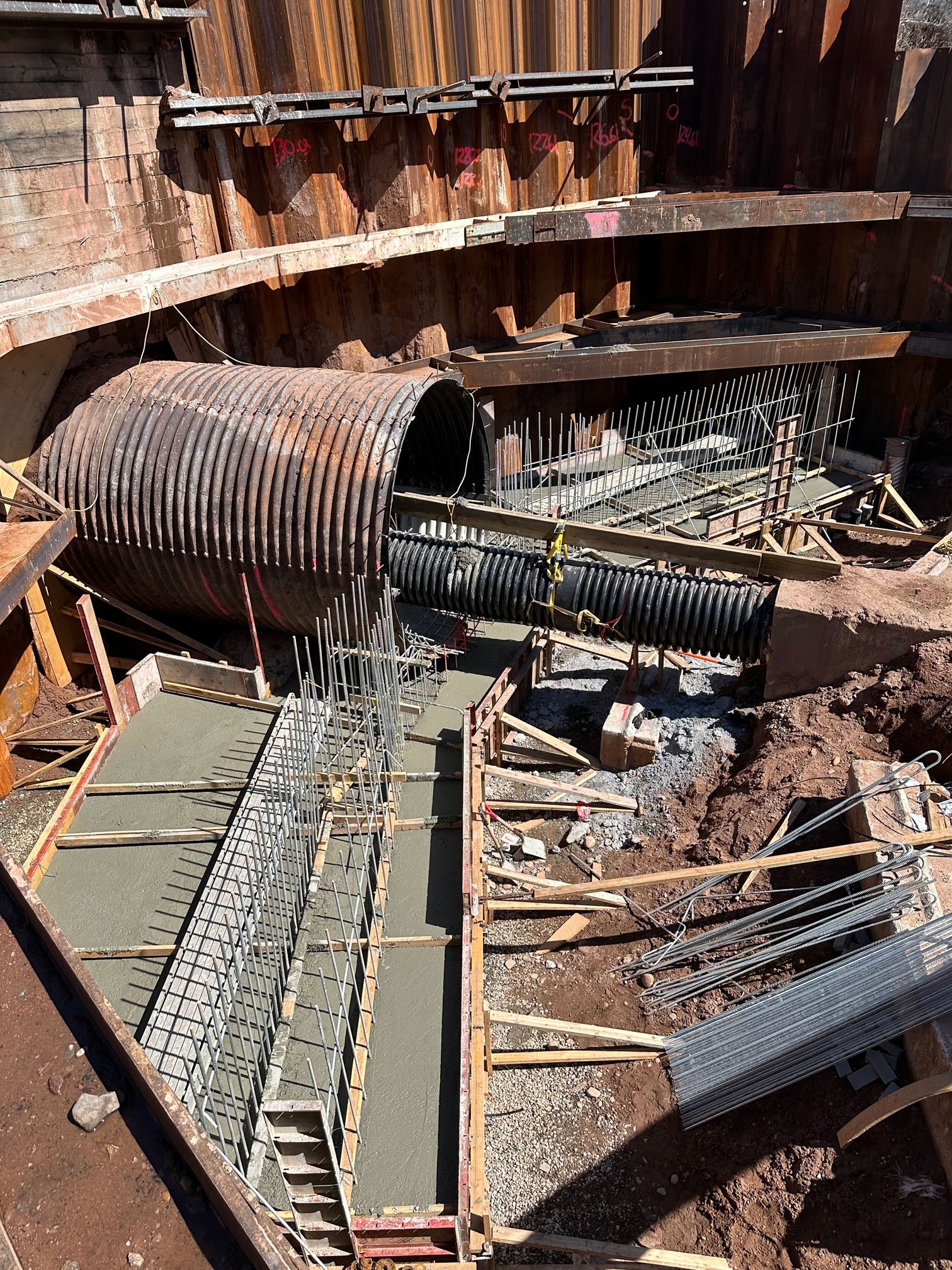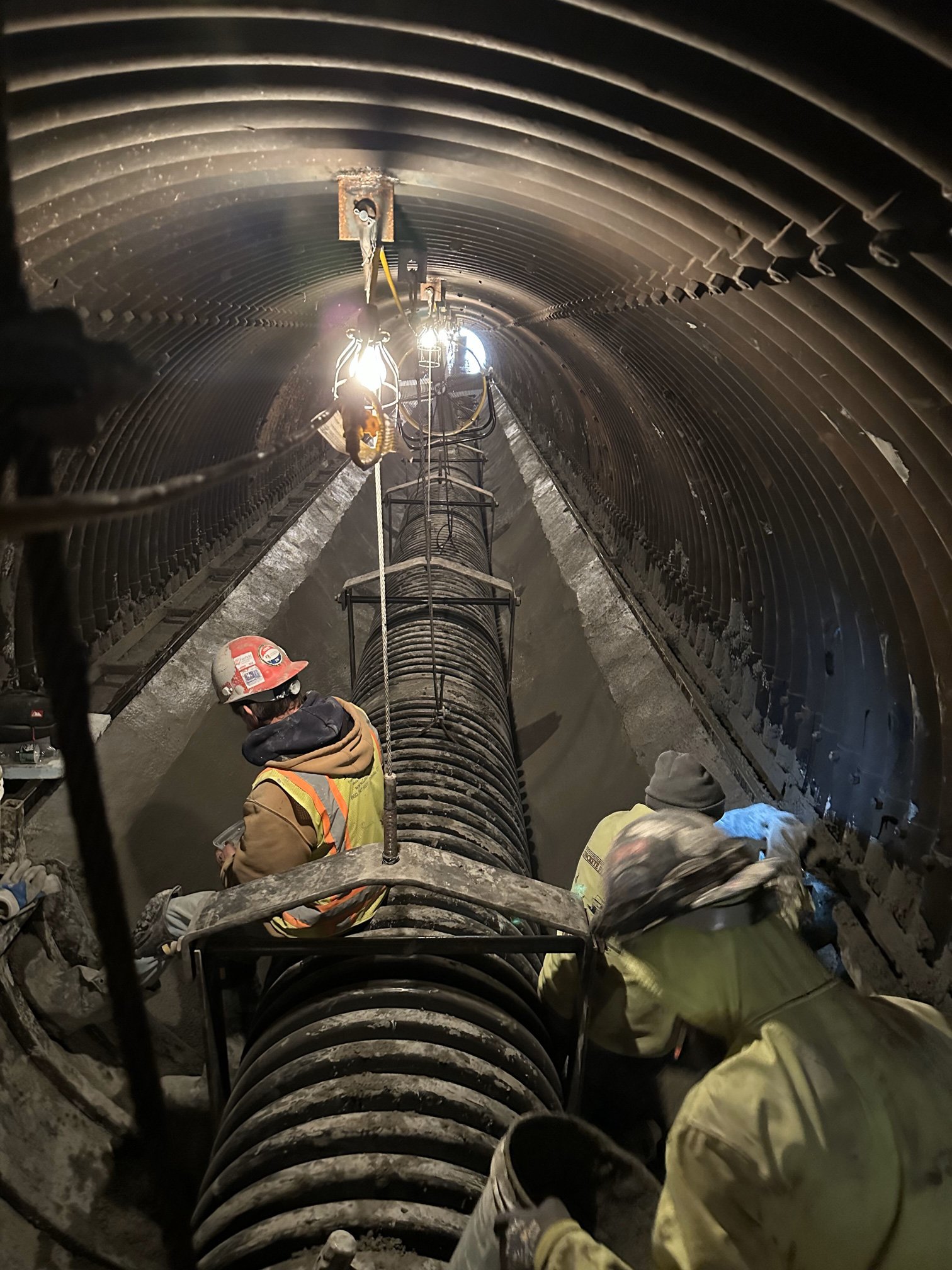Challenging Work Environments and Creative Solutions at Folly Brook in Manchester
May 9th, 2023
“There are no breaks when you’re pouring concrete”
Better. Faster. Easier. That’s Loureiro’s thought process when developing innovative solutions for the challenges our clients face. A recent example of this unofficial mantra came through in the rehabilitation of the Folly Brook Culvert in Manchester, Connecticut.

When a 10 foot pipe carrying water under I-384 had deteriorated to the point that it was no longer functional, the Connecticut Department of Transportation (CT DOT) approached Loureiro to revive this critical infrastructure, requiring minimal traffic disruption on this busy stretch of highway. Before the excavation, Loureiro had to build two access roads averaging approximately 650’ in length along the north and south sides of the interstate in order to safely access the 10’ corrugated metal pipe pipe and maintain earth on both sides.
The culvert had been tasked with carrying the Hocaknum River from one side of I-384 to the other. The invert - the lowest point on the inner diameter of the pipe - had deteriorated, which was preventing proper flow of fluid within the pipe system.
“We ran into a few hiccups and challenges related to the project and we wanted to make up time,” says Project Manager Brett Anderson. “We looked at the invert and wanted to find a way to cut down the time it would take to complete that portion of the project. Initially pouring the new invert was supposed to take about twenty days . We wanted to cut that down in half - or even less.”
“We had to come up with an idea of how to best pour a new 8 inch concrete invert in a 10 foot diameter metal pipe that was 310 feet long. That’s challenging enough. To further complicate matters, there was also a 30 inch temporary pipe suspended right above our heads that was carrying water. We had to work around that, too.”
Brett, along with concrete superintendent Ian Kapura and project superintendent Tim Desso, put their heads together to come up with a game plan. “We went through different options for formwork styles for the pour,” recounts Ian. “One night we all got together after work to figure this thing out and my superintendent Andy Corsetti suggested a slip form system and it just clicked from there. I knew exactly what we had to do.”
A slip form method of concrete pouring involves designing and building a sled that accounts for the measurements of the pipe and the amount of concrete being poured. That sled rests on brackets welded to either side of the pipe and is pulled by a jig to help it navigate the pipe. The concrete itself is poured from the front of a sled. The process would allow the team to pour the concrete in a relatively short amount of time in a confined space while working clear of the pipe carrying the existing river.

Ian and his team set to designing and building the necessary elements for the slip form pour as collaboration continued between Loureiro, Builders Concrete East, and CT DOT, who had staff onsite to assist.
“We showed up at 2:00 AM,” recalls Tim Desso, “and the first concrete truck rolled in an hour later. The whole process took about 17 hours. And there are no real breaks when you’re pouring concrete.”
Typically, a pour has to begin within 90 minutes of a truck arriving or the concrete truck will be turned away.
“Making sure the concrete mix is right is important,” Ian says. “And this particular mix design proved hard to pump - we had to take the pump line apart multiple times.”

But despite the cramped working environment and long hours, the collaborative effort allowed the team to pour the new invert to round out that portion of the overall project.
“It all went better than expected,” says Tim. “It really took a team effort from all of us, from Ian and his team getting measurements and the forms built, to the help from our client (CT DOT).”
At Loureiro, we strive to deliver more by taking a fresh approach to problem solving, challenging traditional industry models to reach innovative and unexpected solutions for our clients. Our creative solution at Folly Brook has allowed us to start taking the next steps to finish up the project, including installing and backfilling the head and wing walls, and removing the temporary bypass pipe and restoring the access roads.
“We saw an opportunity to save some time, money and resources - which resulted in the best solution for the client,” says Brett. “At the end of the day, that’s what we’re all about.”




